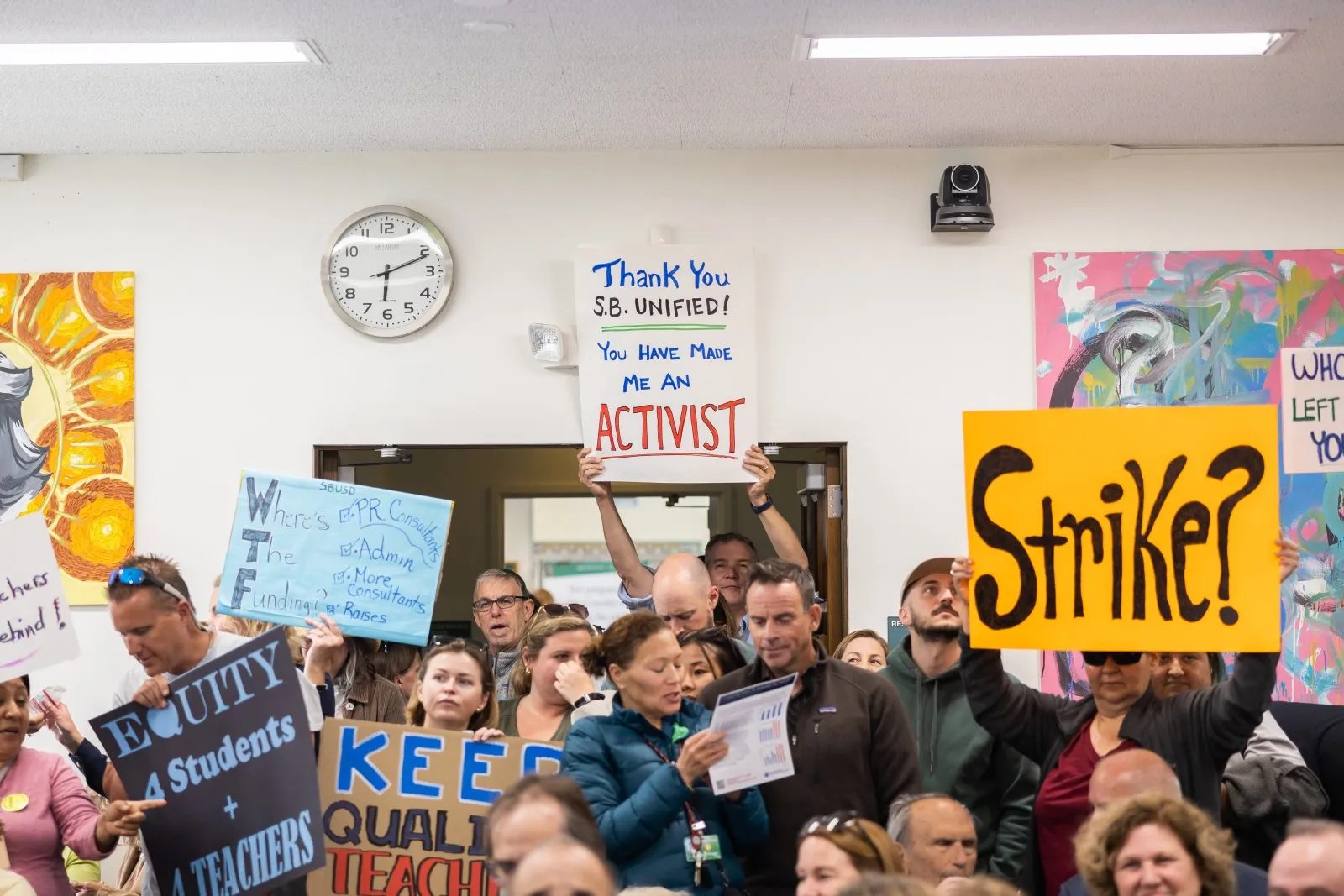Santa Barbara Unified School District Offers $22 Million for Teachers
Union Says Negotiations Are Moving in the Right Direction

The Santa Barbara Unified School District brought forward a $22 million counterproposal for teacher compensation during the second round of contract negotiations with the Santa Barbara Teachers Association (SBTA) on November 28.
The district stated that it believes the proposal “can form the basis for an agreement.” It is intent on avoiding “incremental bargaining,” with the hope of bringing in an early settlement.
“SBTA definitely feels that we are moving in the right direction, thanks to action and mobilization by our union,” said SBTA president Hozby Galindo in response to Tuesday’s negotiations. “It has forced the district to come to the bargaining table and bring forth genuine proposals.”
Teachers have become increasingly fed up with their current salaries over the past year, erupting into emotionally charged demonstrations at district school board meetings. They’ve been applying pressure on the school district to increase wages and benefits and curb the high rates of teacher turnover and burnout felt by educators around the district.
At the first negotiation session on November 15, SBTA proposed a 20 percent increase across the entire salary schedule in the 2024-2025 school year and a permanent class size reduction. Together, the proposals would cost the district an estimated $26.2 million.
Although the district did not come with a counterproposal when it first sat down at the bargaining table, it returned on Tuesday proposing the $22 million total compensation package over two years (2024-25 and 2025-26).
The overall proposal would be approximately equal to a 19 percent raise over those two years. That includes a proposed increase in the district’s contribution to medical benefits — covering 75 percent of medical benefit premium costs for all employee plans, up from the previous 40-60 percent of costs covered by the district.
Monthly employee out-of-pocket costs would be reduced by $102 to $937, depending on household size and the plan chosen, according to the district. Annual savings would be between $1,020 to $9,370, and it would cost the district an estimated $3,509,234 over the next two years.
But when looking at salary alone, the proposed raise translates to only an 8 percent increase in 2024 and a 4 percent increase in 2025. That’s 8 percent less than what the union proposed on November 15, and over a longer time frame.
Still, data from the district shows that with the 8 percent salary increase, Santa Barbara Unified would rank first out of six neighboring districts — Carpinteria Unified, Lompoc Unified, Ventura Unified, Paso Robles Joint Unified, and San Luis Coastal Unified — in terms of beginning and maximum scheduled salaries.
The current beginning salary for teachers is $58,272, which would become $62,934 with the proposed 8 percent increase. The maximum salary would rise from $106,318 to $114,823.
However, Galindo said that the district’s proposal still “falls short of what the students and teachers in the district need right now.” He said that the comparison to other districts is not “apples to apples” because it assumes that those districts will not give their employees a raise next year.
“The district doesn’t understand how important it is to have a competitive salary schedule now, instead of two years from now, to attract and retain teachers,” Galindo continued.
“SBTA wants to make sure that we reach an agreement that meets the needs of our membership, and this proposal does not meet those needs,” he added. “Nevertheless, we will bargain in good faith and see if we can find a compromise that will benefit both parties.”
It is at least possible that the two parties could see eye to eye on one proposal: maintaining reduced class sizes. On Tuesday, the district agreed to place class-size reduction permanently in the contract, and continue the most recent class-size reduction numbers, as proposed by SBTA at the last session.
However, since the reduced class sizes have been funded by one-time funds, which are expiring, the $6.2 million ongoing cost to maintain reduced class sizes would have to be paid out of regular district funds and “represents a new, ongoing $6.2 million expenditure for the SBTA bargaining unit,” the district stated.
The third negotiation session is scheduled for December 12. Additional dates have been set for January 11, January 19, and February 6.
